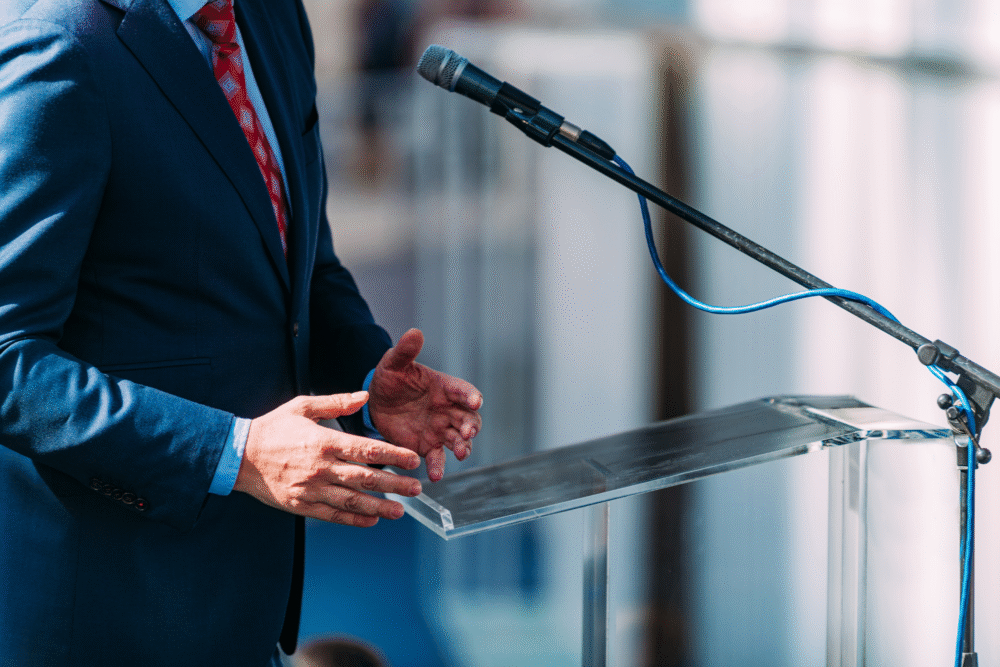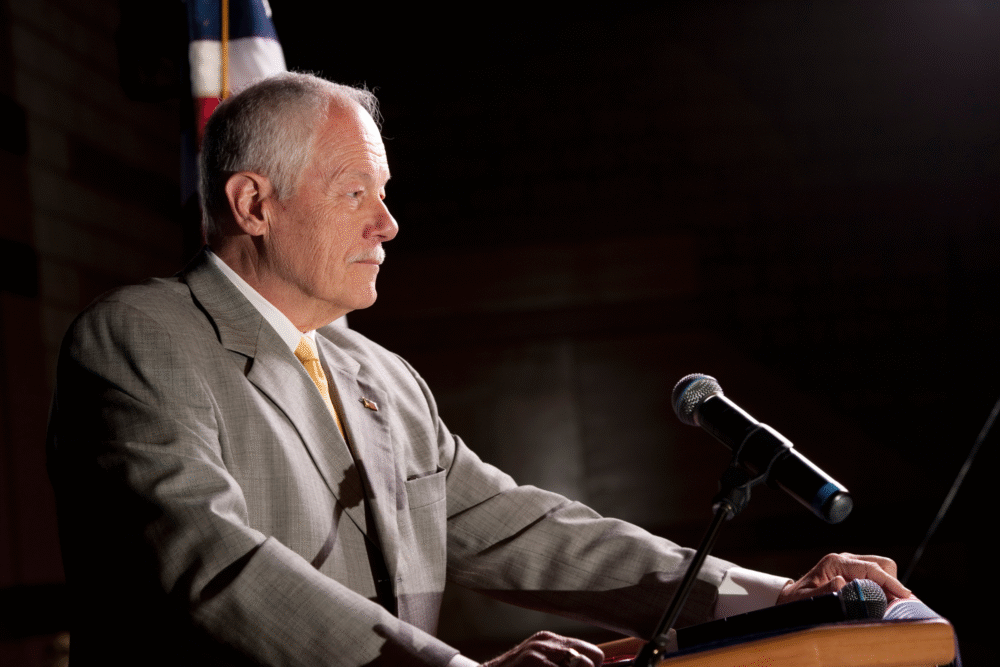It promises prosperity, but the math never adds up.

There’s a certain kind of economic theory that resurfaces every few years like a bad rash—dressed up with fresh slogans and slick charts, but still rooted in the same flawed assumptions. “Voodoo economics” was the term once used to mock the idea that slashing taxes for the wealthy would magically lift everyone else. It didn’t work then, and yet somehow, the pitch is making a comeback in 2025—just with newer buzzwords and better PR.
This time, it’s cloaked in language about “incentives,” “growth engines,” and “liberating markets.” But behind the jargon, it’s the same old playbook: cutting taxes for corporations and high earners, gutting public programs, and hoping that somehow the benefits will trickle down. You don’t need an economics degree to know when something doesn’t smell right—you just need to recognize the patterns. These signs point to a growing revival of the same discredited economic ideas that have left ordinary people behind while enriching the few at the top.
1. Tax cuts are marketed as “freedom boosts” for job creators.

Politicians are once again wrapping massive tax cuts for corporations and the wealthy in feel-good language about freedom, innovation, and economic growth, according to Daniel Liberto at Investopedia. They say things like “letting people keep more of what they earn” while quietly crafting tax policy that overwhelmingly benefits the top 1%. The idea is that these cuts will unleash productivity and drive job creation—but history shows those jobs rarely materialize in any meaningful way.
The numbers don’t lie. When similar cuts were made in previous decades, companies used the extra cash to buy back stock, pad executive bonuses, or hoard profits. Very little trickled down to the average worker. Yet in 2025, this repackaged pitch is gaining steam again, with new branding and vague promises about long-term rewards. Meanwhile, public services are slashed to “offset” the lost revenue. It’s the same trick, just dressed in more flattering language.
2. Deficits are ignored unless spending helps regular people.

Suddenly, deficits don’t matter—at least not when it comes to tax breaks or military spending, as reported by the experts at Corporate Finance Institute. But suggest expanding healthcare access or improving infrastructure, and you’ll hear nonstop panic about runaway debt. It’s selective outrage, and it’s back in full force this year. The logic is twisted: balloon the deficit for top-heavy benefits, then use the resulting shortfall to justify cutting programs for everyone else.
This bait-and-switch has long been a signature move of voodoo economics. Prioritize giveaways for the rich, then manufacture a fiscal “crisis” to gut social spending. In 2025, it’s happening again. Watch how easily budget discipline is tossed aside when it benefits private industry, and how quickly it returns when teachers, nurses, or working parents stand to gain.
3. Trickle-down language is disguised as “supply-side upgrades.”

Nobody wants to say “trickle-down” out loud anymore—it’s become a punchline, as stated by Daniel Jensen at American Compass. So now it’s dressed up as “supply-side stimulation” or “economic freedom enhancements.” It sounds more technical, but it’s the same flawed idea: give the wealthy more, and trust that the benefits will somehow flow downward to everyone else. This framing is popping up in policy memos and think tank reports again, all with an air of academic legitimacy.
The real impact, however, stays the same. Wealth accumulates at the top, wages stagnate, and essential services get squeezed. In 2025, politicians are once again selling the illusion that by boosting capital gains or eliminating estate taxes, they’re helping the economy “as a whole.” But the benefits don’t distribute evenly—they concentrate, just like they always have under this playbook.
4. Public programs are framed as burdens, not investments.

Instead of talking about schools, healthcare, or transit systems as investments in a functioning society, they’re being reframed as bloated expenses that drag the economy down. You’ll hear terms like “entitlement reform” and “budget discipline” used to justify cuts to social safety nets while leaving massive subsidies for corporations untouched. It’s a clever spin, but it’s based on a lie.
In reality, public programs often have a high return on investment—boosting economic participation, health, and stability. But in 2025, that narrative is losing ground again to the old idea that government is the problem and the private sector can do it better. This shift signals a retreat into the same economic logic that favors austerity over equity and privatization over public good.
5. GDP growth is prioritized over income equality.

Leaders are once again pointing to GDP growth as proof that the economy is strong, even if wages are stagnant and the cost of living keeps rising. It’s a familiar tactic: highlight broad economic indicators while ignoring who actually benefits from the growth. The focus stays on shareholder gains, stock markets, and corporate earnings—metrics that don’t reflect most people’s reality.
By making GDP the hero, politicians avoid discussing income inequality, housing instability, and medical debt. In 2025, this sleight of hand is back in style. As long as the economy “on paper” looks good, they claim their policies are working. But when growth is lopsided and concentrated at the top, it’s not progress—it’s a mirage.
6. Deregulation is sold as innovation, no matter the cost.

Cutting regulations is once again being hailed as a way to “unleash business potential” and spark a wave of innovation. But in practice, the rollbacks often target environmental protections, labor rights, or financial safeguards. The justification is always the same: remove the red tape and the market will self-correct. Yet history—and recent memory—shows the exact opposite.
In 2025, regulations are being stripped in sectors like energy, finance, and housing under the banner of “efficiency.” But efficiency for whom? These rollbacks may help corporate profits in the short term, but they come at the expense of long-term sustainability and public welfare. When oversight disappears, abuse, pollution, and inequality tend to fill the void. The cost is hidden until it’s too late.
7. Wealthy individuals are treated as national assets.

There’s a renewed narrative that billionaires are job creators, visionaries, and indispensable to the country’s economic health. Taxing them or closing loopholes is framed as an attack on success itself. In this worldview, the richest Americans aren’t just people with money—they’re treated like sacred resources we must protect at all costs.
This deference fuels policies that shield extreme wealth while placing more burden on middle and low-income households. In 2025, this mindset is back with full force. You’ll hear arguments that progressive taxation is “punitive” or “anti-growth,” even though the numbers say otherwise. The idea is clear: protect the wealthy so they can “lead.” But in practice, it just widens the gap between power and powerlessness.
8. Corporate subsidies are quietly ballooning again.

While public programs face constant scrutiny, massive subsidies to private companies are quietly growing. These are often labeled as “incentives” or “public-private partnerships,” but they’re essentially giveaways—money flowing from taxpayers to industries that promise jobs or development, and rarely deliver either in full.
In 2025, these deals are once again being pushed through with minimal oversight. The companies pocket the cash, cut corners, and often outsource jobs anyway. Meanwhile, struggling communities are left with fewer services and empty promises. It’s another core feature of voodoo economics: redirect public funds to private hands, call it progress, and hope nobody checks the receipts.
9. Economic pain is blamed on cultural issues, not policy.

Instead of acknowledging that policy choices have deepened inequality or weakened public systems, leaders are blaming everything on vague “cultural decay” or the work ethic of younger generations. It’s a deflection tactic that shifts focus away from their own failures and onto easy scapegoats.
In 2025, this narrative is getting louder again. Economic struggles are blamed on immigration, social movements, or moral decline, rather than on deregulation, wage suppression, or tax loopholes. It’s designed to divide and distract, making voters angry at each other instead of the systems rigged against them. When cultural blame replaces economic accountability, grift flourishes unchecked.
10. Promises of future growth are used to excuse present pain.

Voodoo economics always relies on the future—on what might happen “if we just give it time.” Leaders claim the short-term cuts will lead to long-term gains, even if nothing improves for years. People are told to be patient, to tighten their belts, and to wait for the boom that’s always just around the corner.
But those promised booms rarely come, especially for the average worker. In 2025, that story is being recycled again. Meanwhile, costs are rising, wages are flat, and support systems are stretched thin. It’s a familiar delay tactic that asks people to suffer quietly now for prosperity they may never see. The payoff always seems to go to someone else.
11. Historical failures are rebranded as bold new strategies.

Policies that failed in the 1980s and early 2000s are being reintroduced with shiny new names. It’s the same script, but rewritten with friendlier fonts and updated talking points. Lawmakers act like they’ve found a new formula, but it’s just the old one with better marketing and fewer details.
These recycled ideas are being pitched to a new generation that may not remember the last time it all fell apart. In 2025, voodoo economics is making a comeback—not because it works, but because it serves those already in power. When leaders pretend economic gravity doesn’t apply to them, the rest of us are left holding the bill.
